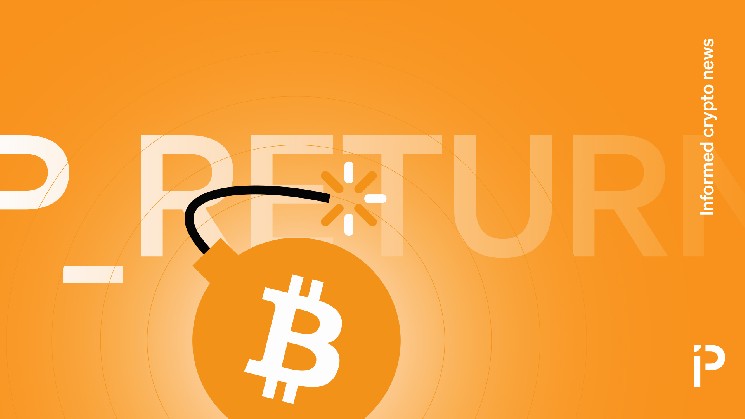This weekend’s proposed Bitcoin fork is set to begin an activation period to update consensus rules to limit data storage unrelated to on-chain movement of BTC
As this year’s OP_RETURN wars escalate dramatically, pseudonymous developer “Dathon Ohm” has revived the Bitcoin Improvement Proposal (BIP) 2017, also known as the “Reduced Data Temporary Softfork.” If someone were to code an activation client and formalize it on GitHub, it could become a BIP 444.
The new blockchain rejects many types of common data storage for media, collectibles, rollups, and other novelties and business uses at its underlying consensus level.
Specifically, the proposal escalates disagreements over Bitcoin Core v30’s relaxed approach of queuing up to 100KB of arbitrary data per transaction into a node’s memory pool (“mempool”).
Such contiguous chunks of data would be incompatible not only with mempool’s default standard rules, but also with the blockchain’s rules regarding valid transactions.
For context, Bitcoin Core is the most popular software for Bitcoin full node operators, with thousands of operators online at any given time.
OP_RETURN is the most common Bitcoin script code that places data in a transaction that has nothing to do with validating Bitcoin (BTC) movements.
Bitcoin Core versions 29 (v29) and earlier prohibited multiple OP_RETURN outputs per transaction and OP_RETURN outputs larger than 84 bytes in the default memory pool.
In contrast, Core v30 accepts multiple OP_RETURN outputs and up to 100KB of OP_RETURN output and relays them across the default memory pool.
Bitcoin Core developers released v30 on October 10th.
A Bitcoin hard fork creates a backwards-incompatible blockchain that requires an upgrade of all nodes, whereas a soft fork is backwards compatible, allowing older nodes to verify the validity of transactions on the same blockchain.
Two activation proposals for Bitcoin soft fork
Reporting the growing popularity of Core v30 on the Bitcoin-Dev mailing list, Dathon Ohm suggested a dual activation method for soft forks. If successful, this method would permanently end many types of on-chain data storage, such as inscriptions, runes, ordinals, and rollups.
Interestingly, stamping, as proposed, does not end the more difficult-to-censor types of protocols that hack data onto the blockchain in ways that are difficult to prevent at the consensus level.
Dathon Ohm calls the two activation methods “proactive” and “reactive.”
In essence, the proactive proposal has a placeholder block height of 987424 (likely January 2027 based on average mining time) in preparation for an orderly “flag day” when proponents of reducing on-chain data storage update consensus rules.
In contrast, reactive methods are randomly activated at any time over the next 15 months if miners become aware of illegal content such as CSAM and refuse to include those transactions on Bitcoin’s blockchain.
“In this case, the new rules will take effect on the very next block,” Dasson Ohm wrote.
Although both activation methods are concerning, the reactive method received the most criticism for its short-term effects.
This controversial activation method has garnered the most attention on social media, as it has already been claimed that its supporters plan to use the law and send threatening legal documents to miners in order to pressure them to implement this reactionary fork.
Read more: 3 sneaky changes in Bitcoin Core v30 confuse node operators
Luke Dashjr and Bitcoin Technicians Blamed
Many are criticizing core developer Luke Dash Jr. and his OCEAN mining pool colleague Bitcoin Mechanic for Dason Ohm’s proposal.
TheRage previously reported that Dashjr was planning a hard fork. He refuted the article, calling it a “completely baseless lie.”
Over the weekend, many developers, including Dashjr, gathered at Tether’s Bitcoin conference Plan B in Switzerland.
Dashjr favors Knots, a forked version of Bitcoin Core that rejects Core v30’s OP_RETURN data storage allowance increase, in addition to tasks such as reviewing pull requests and assigning BIP numbers.
Some people believed that the in-person meeting provided the Knots community with an opportunity to propose this soft fork.


